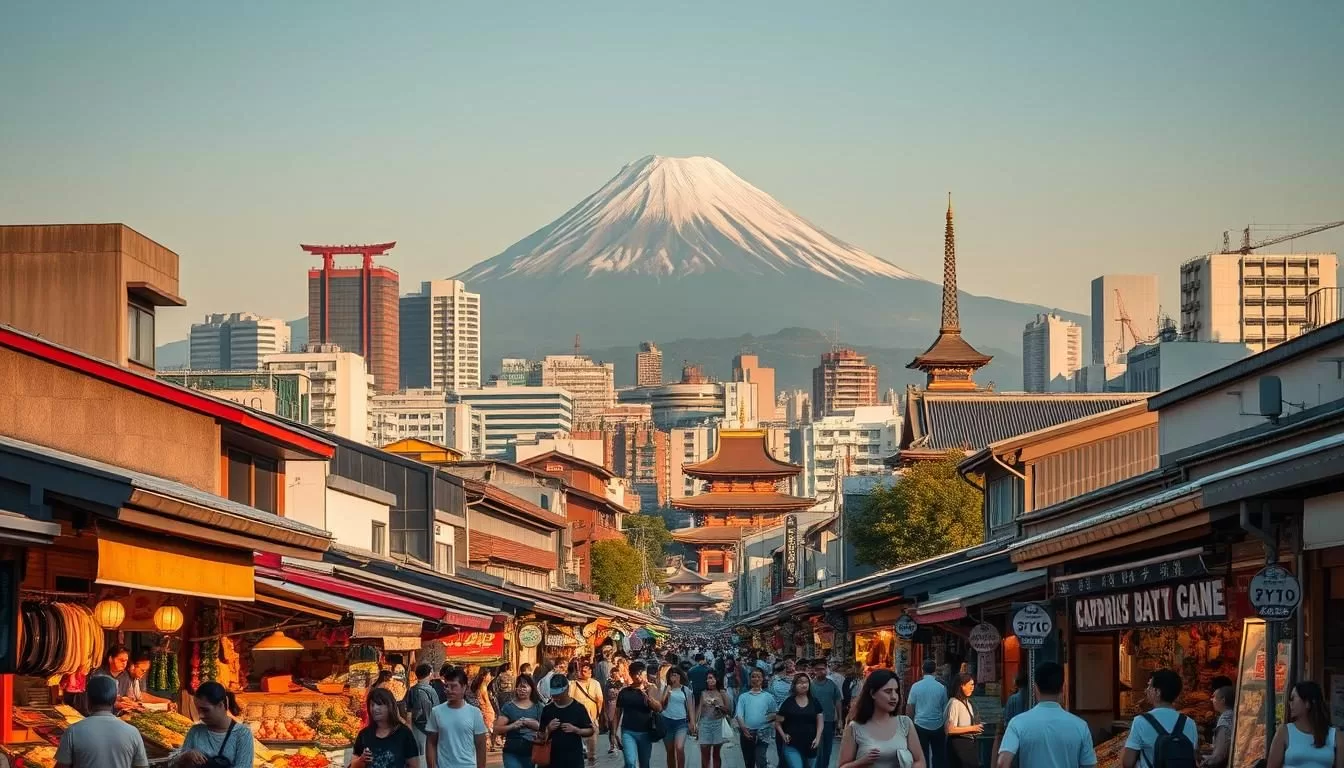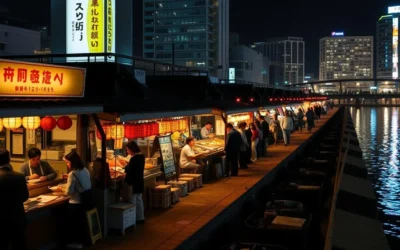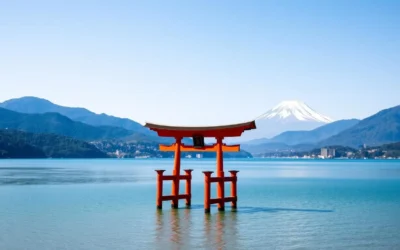✓ Accommodations✓ Flights✓ Rental Cars✓ Tours & Activities
Located to the southeast of Tokyo, Ōta-ku is a fascinating ward that offers a unique blend of traditional Japanese culture and modern attractions. Surrounded by Tokyo Bay and the Tama River, this ward is rich in history and natural beauty.
As the home to Haneda Airport, one of Tokyo’s major international airports, Ōta-ku has gained a reputation for its convenience and accessibility. Beyond its practicality, the ward boasts vibrant shopping streets and is a hub for high-technology companies, making it a compelling destination for travelers and business visitors alike.
Whether you’re looking to explore historic temples, relax in serene parks, or experience the local cuisine, Ōta-ku has something to offer. This guide will help you navigate the top attractions and experiences that make Ōta-ku a must-visit destination in Tokyo.
Discovering Ōta-ku: Tokyo’s Hidden Gem
Discover the charm of Ōta-ku, Tokyo’s lesser-known district. Ōta-ku is a treasure trove of experiences, offering a mix of natural beauty, cultural heritage, and modern attractions that cater to all kinds of visitors.
Where is Ōta-ku Located?
Ōta-ku is one of the 23 special wards of Tokyo, Japan. It is located in the southeastern part of the city, making it easily accessible from major areas like Shinagawa and Haneda Airport. This strategic location allows visitors to explore the district as part of their Tokyo itinerary or as a quick getaway.
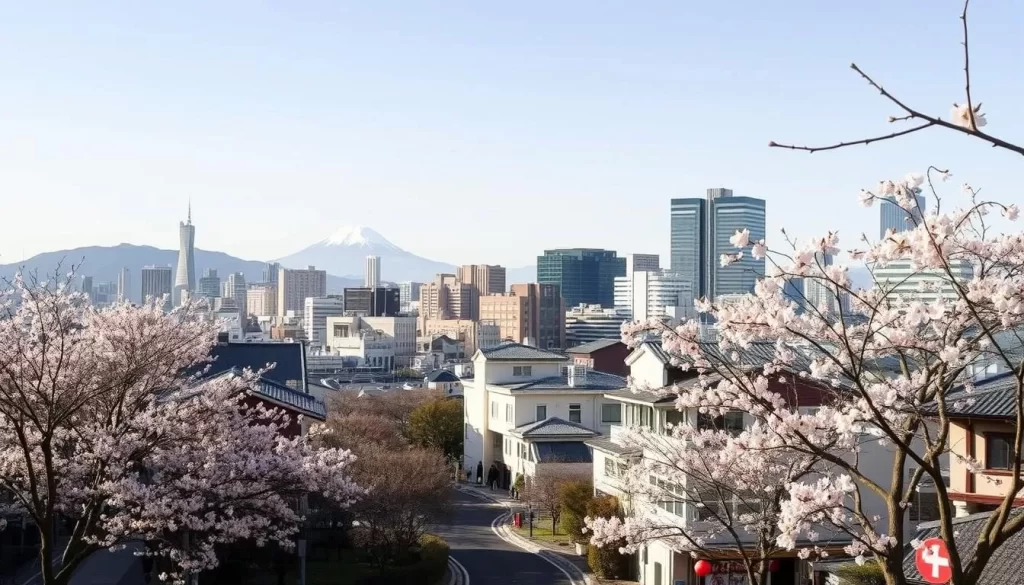
Why Visit Ōta-ku?
Ōta-ku offers a unique experience that blends traditional and contemporary Tokyo. From serene parks like Senzoku-ike to historic temples such as Ikegami Honmonji, there’s no shortage of spots to explore. The district’s diverse attractions ensure that you have a memorable experience whether you’re interested in nature, history, or culture.
Best Time to Visit
The best season to visit Ōta-ku depends on your preferences. Spring (March to May) is particularly picturesque, with cherry blossoms transforming areas like Senzoku-ike Park into stunning pink wonderlands. Fall (September to November) brings comfortable temperatures and beautiful autumn foliage, making it ideal for exploring outdoor attractions. Summer hosts many traditional festivals, including the famous Oeshiki Festival at Ikegami Honmonji Temple, giving you a chance to experience authentic Japanese celebrations over several days. Winter is less crowded and offers a different perspective, with some attractions being particularly appealing during colder months.
Planning your visit around specific events like the Anamori Inari Festival or the lantern parade at Ikegami Honmonji can provide truly memorable cultural experiences.
How to Get to Ōta-ku
You can reach Ōta-ku conveniently using different modes of transport, including trains and buses. The ward’s accessibility is one of its key advantages, making it easy for visitors to explore its various attractions.
From Haneda Airport
If you’re arriving at Haneda Airport, getting to Ōta-ku is straightforward. You can take a train from the airport, which is just a few stops away from Ōta-ku. The Keikyu Line is a convenient option, offering direct access to several stations within Ōta-ku, including Omori and Heiwajima. The journey takes approximately 10-15 minutes, depending on the destination.
From Central Tokyo
For those traveling from central Tokyo, Ōta-ku is easily accessible by train. You can take the JR East or Keikyu Line from major stations like Shinagawa or Tokyo Station. The travel time varies between 15-30 minutes, depending on the line and the starting point. Ōta-ku’s excellent train network ensures that you can reach your destination quickly and efficiently.
Getting Around Ōta-ku
Once you arrive in Ōta-ku, getting around the area is convenient due to its comprehensive network of local trains and buses. Many of Ōta-ku’s main attractions are within walking distance of train stations, allowing you to explore different parts of the ward on foot. Additionally, local community buses operate throughout Ōta-ku, connecting residential areas with shopping districts and major transportation hubs. Some attractions, like Heiwajima Onsen, offer their own shuttle services from nearby stations, typically costing around 100 yen per ride. You can also rent a bicycle to explore Ōta-ku, with rental shops available near major stations and bike-friendly paths throughout the area, enhancing access to various parts of Ōta city.

Explore Ikegami Honmonji Temple

As you explore Ōta-ku, a visit to Ikegami Honmonji Temple is an unforgettable experience. This historic temple is renowned for its cultural significance and breathtaking architecture, making it a must-visit destination for anyone traveling to Tokyo.
The Historical Significance
Ikegami Honmonji Temple holds a special place in Japanese history, particularly in the context of the Nichiren Buddhist sect. Founded in 1282, it is believed to be the final resting place of Nichiren, a prominent Buddhist priest. The temple has been a pilgrimage site for centuries, attracting visitors from all over the world who come to pay their respects and experience its tranquility.
The temple’s historical significance is not just limited to its association with Nichiren; it also represents a crucial part of Japan’s religious and cultural heritage. As you walk through its grounds, you can feel the weight of history and the deep spirituality that permeates this sacred site.
The Five-Story Pagoda
One of the temple’s most striking features is its majestic Five-Story Pagoda, a beautiful example of traditional Japanese architecture. This pagoda stands tall, symbolizing the temple’s rich history and spiritual importance. Visitors can admire its intricate design and the serene surroundings, making it a perfect spot for reflection and contemplation.
The pagoda is not just an architectural marvel but also a symbol of peace and harmony, reflecting the teachings of Nichiren and the Buddhist principles of compassion and wisdom.
Annual Oeshiki Festival
The Oeshiki Festival, held annually in October, is a spectacular event that commemorates the death anniversary of Nichiren. This festival is a vibrant celebration that attracts over 300,000 people, making it one of Tokyo’s most significant religious events. The highlight of the festival is the breathtaking Mando Parade, where thousands of participants carry 10-foot tall lanterns decorated with artificial cherry blossoms through the nighttime streets.
During the festival, the temple grounds come alive with food stalls, traditional performances, and special prayer services, offering visitors a unique insight into Japanese religious traditions and culture. Participating in or observing the Oeshiki Festival is a rare opportunity to experience an authentic Japanese cultural event that has been celebrated continuously for over 700 years.
Visit Anamori Inari Shrine for Good Luck

Tucked away in Ōta-ku, Tokyo, lies the enchanting Anamori Inari Shrine, a must-visit destination for those seeking good fortune. This serene Shinto shrine is famous for its vibrant tunnel of torii gates, creating a breathtakingly beautiful and spiritual atmosphere.
The Tunnel of Torii Gates
The main attraction at Anamori Inari Shrine is undoubtedly its stunning tunnel of torii gates. As you walk through this vermilion-colored passageway, you’ll feel as though you’re in a different world, far removed from the hustle and bustle of city life. The tunnel is not just a feast for the eyes; it’s also a spiritual journey, with each gate symbolizing a prayer or wish from devotees.
O-suna: Sand for Good Fortune
Another unique feature of Anamori Inari Shrine is the O-suna, or sand for good fortune. Visitors can participate in a traditional ritual where they grab a handful of sand and make a wish. This charming custom adds to the shrine’s allure, making it a memorable experience for visitors.
Best Time to Visit the Shrine
To make the most of your visit to Anamori Inari Shrine, consider the timing. Early morning, before 9 AM, offers the most serene experience, allowing you to enjoy the torii gate tunnel without the crowds. Alternatively, visiting during the New Year’s first days (hatsumode) can be a great way to experience traditional Japanese celebrations, though be prepared for larger crowds. The shrine is particularly atmospheric during seasonal changes, especially autumn when the surrounding trees display vibrant colors that complement the vermilion torii gates. If you’re interested in photography, the golden hour before sunset creates magical lighting conditions. Checking the shrine’s festival calendar before your visit can also enhance your cultural experience, especially during events like Hatsuuma (First Horse Day) in February or the Autumn Festival in September.
Whether you’re looking for a peaceful retreat or a cultural experience, Anamori Inari Shrine is a must-visit shrine in Tokyo. Plan your day trip to Ōta-ku and discover the spiritual charm of this hidden gem.
Relax at Senzoku-ike Park
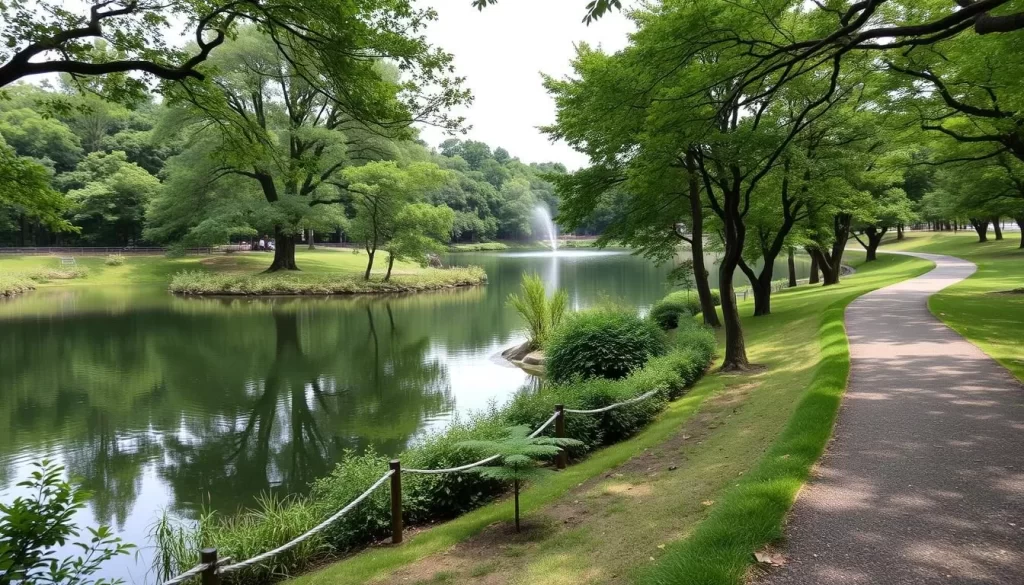
For those seeking a calming experience in Tokyo, Senzoku-ike Park is an ideal destination. This beautiful park offers a serene atmosphere, making it perfect for relaxation and rejuvenation.
The Beautiful Lake and Swan Boats
The centerpiece of Senzoku-ike Park is its stunning lake, where you can enjoy a leisurely ride on swan-shaped boats. The lake’s calm waters reflect the surrounding nature, creating a picturesque scene that is perfect for unwinding.
The tranquil environment of the lake is enhanced by the gentle gliding of the swan boats, making it a delightful experience for visitors of all ages.
Cherry Blossom Viewing Spots
Senzoku-ike Park is renowned for its beautiful cherry blossom trees, which bloom vibrantly during the spring season. The park offers several prime spots for hanami (cherry blossom viewing), allowing you to appreciate the fleeting beauty of these iconic flowers.
As you stroll through the park, the breathtaking views of the cherry blossoms against the backdrop of the lake create an unforgettable experience.
The Spiritual Power Spot
Senzoku-ike Park is considered a spiritual “power spot” in Japanese culture, believed to be imbued with natural energy that promotes renewal and well-being. Many visitors come to the park to experience this purifying energy, following in the footsteps of Buddhist priests who once stopped here during their pilgrimages.
The small shrine opposite the lake, featuring decorative wooden horses (ema), adds to the park’s spiritual ambiance. You can participate in the tradition by washing your hands at the small stone basin near the shrine, symbolically purifying yourself as pilgrims have done for centuries. The combination of water, representing purification, ancient trees symbolizing longevity, and sacred architecture creates a perfect balance of natural and spiritual elements, making this spot a truly special place with a rich history.
Experience Heiwa no Mori Park’s Field Athletic Course

If you’re looking for an adventurous experience in Tokyo, Heiwa no Mori Park’s Field Athletic Course is a must-visit destination. Heiwa no Mori Park is a recreational area that offers a variety of activities for visitors, making it an ideal place for families and adventure seekers alike.
40+ Obstacle Challenges
The Field Athletic Course at Heiwa no Mori Park features over 40 obstacle challenges that cater to different skill levels, ensuring that everyone can test their limits and have fun. These obstacles are designed for kids aged elementary school and above, promoting physical activity and teamwork. You’ll navigate through a series of physical challenges that will put your agility and endurance to the test.
The course is designed to be engaging and challenging, with obstacles that require strategy and physical effort to overcome. As you make your way through the course, you’ll encounter a variety of challenges that will help improve your balance, strength, and coordination.
Water Obstacles and Activities
Heiwa no Mori Park’s Field Athletic Course also includes water-based obstacles and activities, adding an extra layer of excitement to your visit. These water features are perfect for hot summer days, providing a refreshing way to cool off while you challenge yourself on the course. The park offers a unique experience that combines physical activity with the joy of playing in the water.
Whether you’re looking to splash around or simply enjoy the scenery, the water obstacles at Heiwa no Mori Park are sure to delight. The incorporation of water elements into the course design enhances the overall experience, making it a memorable visit to the park.
Family-Friendly Areas
While the main Field Athletic Course is geared towards older kids and adults, Heiwa no Mori Park thoughtfully includes dedicated areas for younger children, featuring scaled-down versions of obstacles that are safe and accessible for toddlers and preschoolers. This ensures that all family members can enjoy the park together, regardless of age.
Parents can relax in nearby seating areas while keeping an eye on their kids, and the park provides clean restroom facilities, water fountains, and shaded rest areas throughout the grounds. You can also enjoy a picnic with your family in the designated picnic spaces near the family-friendly areas, making it easy to spend a full day at the park without needing to leave for meals.
Soak in Ōta-ku’s Famous Black Water Baths

The black water baths in Ōta-ku, Tokyo, are a must-try for anyone seeking a unique relaxation experience. Ōta ward is home to several sentō and onsen that offer black water baths, which are rich in minerals and believed to have therapeutic properties.
What Makes the Black Water Special?
The black water in these baths gets its distinctive color and therapeutic properties from the high concentration of minerals such as iron and sulfur. These minerals are believed to have various health benefits, including improving skin conditions and relieving muscle pain. The unique composition of the water makes these baths a sought-after experience for visitors looking for a traditional Japanese bathing experience.
Top Sentō and Onsen in Ōta-ku
Some of the top recommendations for sentō and onsen in Ōta-ku include facilities that offer not just black water baths but also a range of other bathing experiences. Entry to these bathhouses typically costs around 400 yen, and visitors are usually required to bring their own towels, although rental sets are available. The bath experience is enhanced by the serene environments and traditional architecture of these facilities.
Etiquette for First-Time Visitors
For a pleasant and respectful experience at the black water baths, it’s essential to follow basic etiquette rules. Before entering any bath in Ōta-ku, you must thoroughly wash your body at the shower stations provided. It’s also important to remove all jewelry, as the minerals in the water can discolor metal items. Most facilities are gender-segregated, and it’s customary to bring a small towel for modesty and washing. Be aware that tattoos can be problematic at some traditional bathhouses, so it’s advisable to check in advance.
By following these guidelines and being mindful of the local customs, you can fully enjoy the unique bath experience that Ōta-ku has to offer. Whether you’re looking to relax or rejuvenate, the black water baths in Ōta-ku are an experience not to be missed.
Visit Heiwajima Onsen: The 24-Hour Hot Spring Experience

Heiwajima Onsen is a hidden gem in Ōta-ku, offering visitors a chance to rejuvenate and refresh in its natural hot springs. Located in the heart of Ōta city, this onsen provides a tranquil atmosphere, making it the perfect spot to unwind after a long day of exploring Tokyo.
Variety of Baths and Saunas
Heiwajima Onsen boasts an impressive variety of baths and saunas, catering to different preferences and needs. From hot spring baths infused with minerals to saunas that promote detoxification, there’s something for everyone. The onsen’s baths are designed to provide a relaxing experience, allowing you to melt away stress and tension.
Spa Treatments and Relaxation Areas
In addition to its baths and saunas, Heiwajima Onsen offers a range of spa treatments, including massages and facials. The onsen’s relaxation areas provide a serene atmosphere, perfect for unwinding and rejuvenating. Visitors can enjoy the peaceful surroundings, making it an ideal spot to relax and recharge.
Dining Options at the Onsen
After soaking in the hot springs, you can indulge in a delicious meal at Heiwajima Onsen’s restaurant, which serves traditional Japanese dishes designed to replenish your energy. Enjoy hearty udon noodles, fresh sashimi, and seasonal specialties, all made with fresh ingredients. You can also enjoy light refreshments like green tea, fresh fruit, and Japanese sweets in the casual café area. The restaurant accommodates various dietary preferences, with vegetarian options and English menus available for international visitors. Onsen tamago (hot spring eggs) are a must-try specialty, cooked to perfection using the natural heat from the hot springs. For those staying into the evening, the restaurant offers a selection of local sake and beer, creating a complete relaxation experience that will leave you feeling refreshed and revitalized, ready to take on the next day.
Ōta-ku, Tōkyō, Japan: Best Things to Do for Food Lovers
For food lovers, Ōta-ku in Tōkyō, Japan, is a paradise that promises an unforgettable gastronomic adventure. This district is home to a diverse range of culinary experiences, from traditional Japanese cuisine to international flavors and modern twists.
Start Your Day at Ota Market
Ota Market is a must-visit destination for food enthusiasts. Located in the heart of Ōta-ku, this market offers a wide variety of fresh produce, seafood, and local delicacies. You can sample various foods and drinks, making it an ideal place to start your day. The market’s vibrant atmosphere and rich culinary offerings make it a great experience.
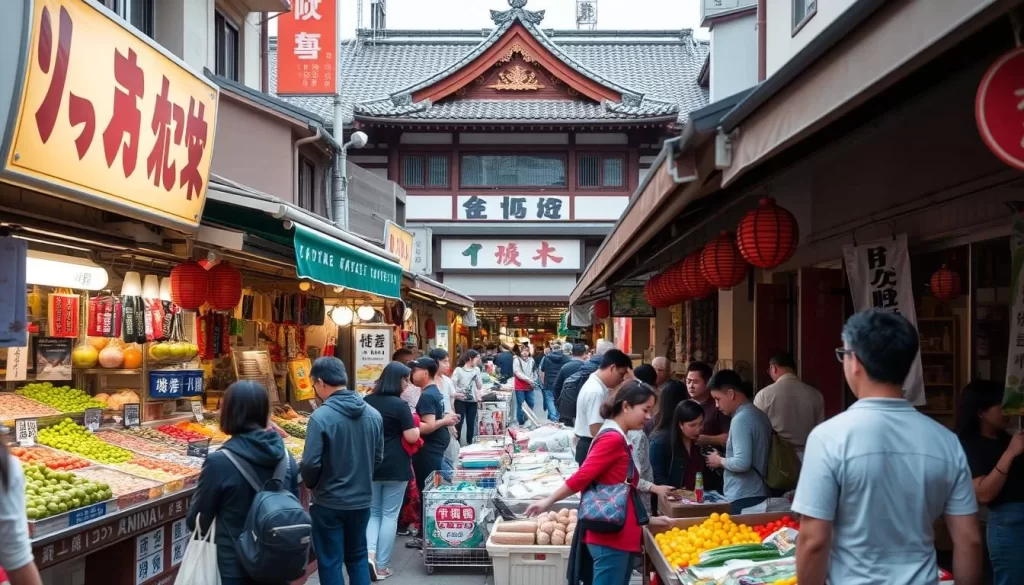
Bourbon Road’s Culinary Delights
Bourbon Road in Kamata is a culinary hotspot, offering a range of dining options that cater to different tastes. This charming street is lined with restaurants and cafes serving everything from traditional Japanese dishes to international cuisine. It’s a great area to explore and discover new flavors, making you feel at home with its welcoming atmosphere.
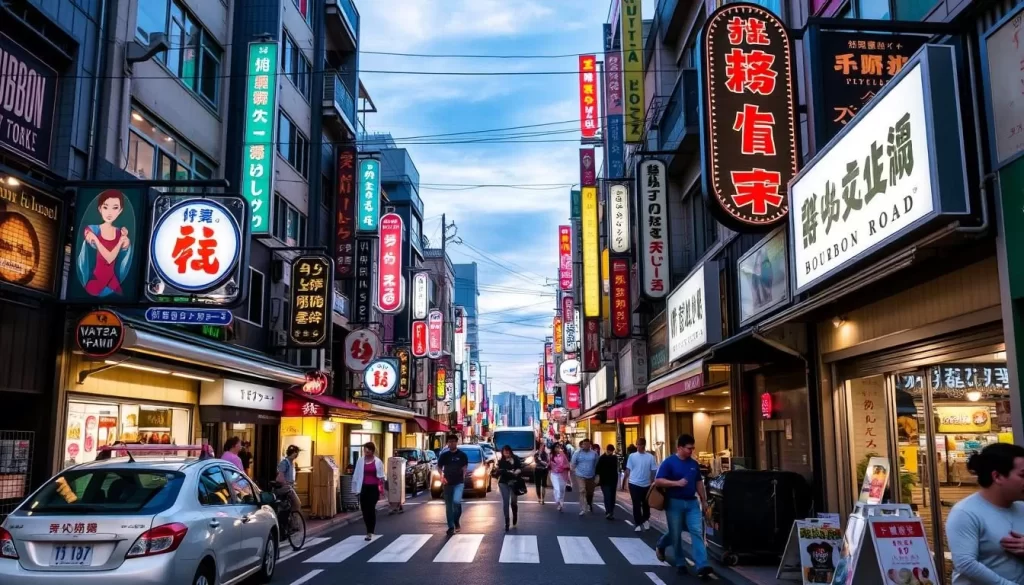
Coffee Culture at Coffee House Rouen
Coffee House Rouen, located less than five minutes from Omori Station, is a nostalgic and retro-style coffee house that has been around for 30 years. With about 80 coffee blends on the menu, including a selection of black teas, this specialty coffee house offers a unique experience. The shop’s retro interior design, featuring wooden furnishings and soft lighting, creates a cozy atmosphere that’s perfect for a relaxing experience in the area.
- Coffee House Rouen offers a glimpse into Japan’s distinctive kissaten culture.
- With over 80 different coffee blends, you’ll experience the Japanese approach to coffee.
- The shop’s retro design has remained largely unchanged for 30 years, creating a timeless atmosphere.
- Unlike modern chain cafes, Coffee House Rouen encourages lingering and conversation.
- The accompanying selection of homemade cakes and pastries showcases Japanese talent for adapting Western desserts.
This coffee house is a great place to unwind and feel at home, making it a must-visit destination in Ōta-ku.

Shop at Haneda Airport Garden

Discover the ultimate travel destination at Haneda Airport Garden, where shopping and dining come together seamlessly. As a multi-purpose facility directly connected to Haneda Airport International Terminal 3, it offers a comprehensive experience for travelers and locals alike.
Multi-Purpose Shopping Complex
Haneda Airport Garden is more than just a shopping center; it’s a vibrant complex that houses a variety of shops, restaurants, a hotel, hot spring baths, and a 12-screen cinema complex. This diverse range of amenities makes it an ideal spot for leisure and relaxation, whether you’re waiting for a flight or exploring the local area.
The complex is designed to cater to different tastes and preferences, ensuring that there’s something for everyone. From high-end brands to unique local goods, the shopping experience at Haneda Airport Garden is both varied and engaging.
Unique Souvenirs and Japanese Brands
When it comes to shopping, Haneda Airport Garden offers a range of unique souvenirs and Japanese brands that make for perfect gifts or personal mementos. You can find exclusive items that reflect Japanese culture, from traditional crafts to modern fashion.
The complex is home to numerous retail outlets that showcase a blend of local and international brands. Whether you’re looking for something authentic or a contemporary product, Haneda Airport Garden’s diverse shopping options are sure to impress.
Dining Options at the Airport Garden
Dining at Haneda Airport Garden is a culinary journey with over 30 restaurants and cafés offering a wide range of cuisines. You can enjoy authentic Japanese dishes, international flavors, or sample regional specialties from various prefectures without leaving the complex.
The food court on the third floor is particularly noteworthy, offering casual and affordable dining options with spectacular views of aircraft taking off and landing at Haneda Airport. For a more premium experience, visit the sake and Japanese whisky bars that offer tasting flights, allowing you to sample before you buy.
Immerse Yourself in Japanese Culture at Ota City Tourist Information Center

Immerse yourself in the local culture and uncover the secrets of Ōta-ku with the help of the Ota City Tourist Information Center. This center is a valuable resource for visitors, offering a wealth of information and experiences that showcase the best of Ōta-ku.
Free Cultural Classes
The Ota City Tourist Information Center offers free cultural classes that allow you to dive into traditional Japanese culture. From calligraphy to cooking, these classes are a great way to learn new skills and appreciate the local heritage. With knowledgeable instructors guiding you through each activity, you’ll gain a deeper understanding of Ōta-ku’s cultural significance.
Paid Workshops and Experiences
In addition to free classes, the center also hosts paid workshops and experiences that offer a more in-depth exploration of Ōta-ku’s culture. These workshops might include specialized cooking classes, traditional crafts, or cultural performances. By participating in these activities, you’ll not only learn something new but also create memorable experiences.
Souvenirs and Local Information
The center features a carefully curated gift shop selling authentic souvenirs from Ōta-ku, including unique items that you won’t find in mainstream tourist areas. The staff are also available to provide personalized recommendations based on your interests, helping you discover lesser-known attractions in Ōta-ku. Additionally, free maps and guides are available in multiple languages, and the staff can mark customized walking routes to maximize your sightseeing efficiency.
Whether you’re looking for cultural immersion, unique souvenirs, or expert guidance, the Ota City Tourist Information Center is your go-to destination in Ōta-ku. With its wealth of resources and friendly staff, you’ll be well-equipped to explore this fascinating ward and make the most of your visit.
Experience Nightlife in Kamata
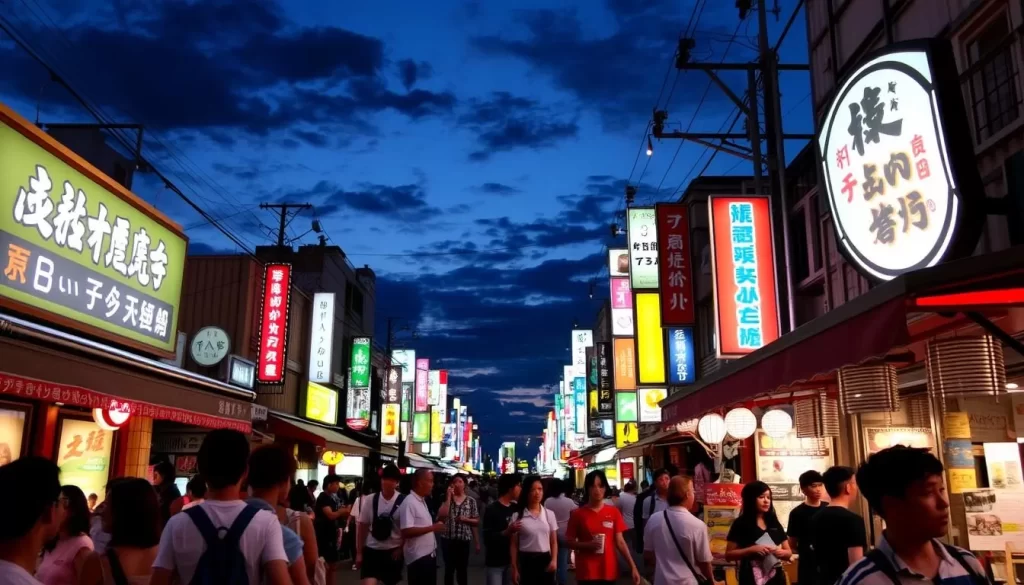
As the sun sets, Kamata transforms into a vibrant nightlife destination that you won’t want to miss. This charming district offers a unique blend of traditional and modern entertainment options, making it an ideal spot to experience the best of Tokyo’s nightlife.
Bourbon Road After Dark
Bourbon Road is a must-visit destination for anyone looking to experience Kamata’s nightlife. This bustling street is lined with bars, clubs, and restaurants, offering something for every taste and preference. As the night wears on, the atmosphere becomes increasingly lively, with locals and visitors alike gathering to socialize and have a good time.
The road is particularly famous for its yakitori restaurants, where you can enjoy delicious grilled chicken skewers in a lively atmosphere. Be sure to try some of the local specialties, such as winged gyoza, which are sure to tantalize your taste buds.
Izakaya Hopping Experience
Kamata is renowned for its izakaya hopping experience, where you can visit multiple bars and restaurants in one night. This is a great way to sample a variety of local cuisine and drinks, while also experiencing the district’s unique atmosphere. Many izakayas offer a wide range of food options, from traditional Japanese dishes to modern fusion cuisine.
Some popular izakayas in Kamata offer omakase experiences, where the chef selects a series of small dishes for you to enjoy. This is a great way to discover new flavors and enjoy the local hospitality.
Late-Night Food Specialties
Kamata’s late-night food scene is not to be missed, with many restaurants and food stalls serving delicious dishes until the early hours of the morning. Be sure to try some of the local specialties, such as yaki-niku (grilled meat) and yaki-tori (grilled chicken skewers).
Some popular late-night food options include monjayaki, a type of savory pancake that’s similar to okonomiyaki. You can also find ramen shops serving rich, flavorful broths and handmade noodles, perfect for a late-night snack.
Explore the Omori Area
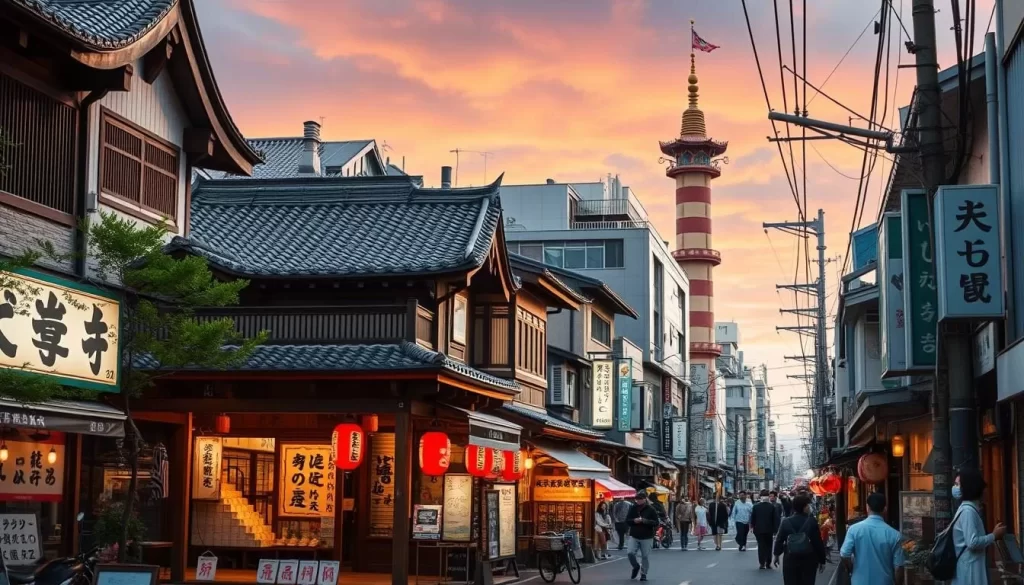
Step into Omori, and you’ll find a fascinating mix of old and new, from ancient seaweed harvesting traditions to sleek modern architecture. This neighborhood in Tokyo offers a unique experience that balances historical character with contemporary urban amenities.
Historical Seaweed Harvesting District
Omori’s history as a seaweed harvesting district is still palpable in its culture and traditions. Although the area has evolved significantly, remnants of its past can be seen in its older buildings and local customs. You can explore the area and discover how this historical aspect continues to influence the local identity.
The legacy of seaweed harvesting is not just a relic of the past; it’s a living part of Omori’s heritage. Local festivals and some traditional practices still celebrate this history, offering a glimpse into the area’s rich cultural roots.
Local Shrines and Summer Festivals
Despite its modernization, Omori is home to many shrines that are integral to the community. During the summer months, these shrines host vibrant festivals that are a testament to the area’s strong cultural heritage. You can experience the lively atmosphere of these events, which often feature traditional music, dance, and food.
The summer festivals in Omori are not just religious events; they are celebrations of community and culture. Visitors can participate in these festivals to get a deeper understanding of the local way of life and enjoy the warm hospitality of the residents.
Modern Metropolitan Attractions
Omori has transformed into a thriving shopping district with several department stores and specialized retail zones. The area around Omori Station is particularly convenient for shopping, with a range of boutiques and modern entertainment venues. You can enjoy stylish cafés, dine at innovative restaurants, and explore the local shopping scene.
The blend of old and new is also evident in Omori’s architecture, with sleek glass-and-steel structures standing alongside preserved examples of mid-20th-century Japanese design. This mix of architectural styles makes Omori a fascinating place to explore, especially for those interested in urban development and design.
Where to Stay in Ōta-ku
Choosing where to stay in Ōta-ku depends on your priorities, whether it’s proximity to Haneda Airport or exploring local attractions. Ōta-ku offers a variety of accommodations that cater to different needs, ensuring a comfortable stay.
Hotels Near Haneda Airport
For travelers arriving by plane, hotels near Haneda Airport are a convenient option. Toyoko Inn Tokyo Haneda Kuko No.2 is one such hotel that offers a free shuttle service to and from the airport, making it an ideal choice for those looking for hassle-free access to their accommodation.

Boutique Accommodations like Hotel Bar Granitos
For a more unique experience, consider boutique accommodations like Hotel Bar Granitos in the Omori area. This hotel offers a distinctive stay with its stylish decor and personalized service.

Budget-Friendly Options
Ōta-ku also offers several budget-friendly accommodations. Oakhouse Kamata260 is a sharehouse that provides private rooms at affordable monthly rates, making it an excellent choice for longer stays.

Day Trip Itineraries in Ōta-ku
Discover the charm of Ōta-ku through its diverse day trip itineraries. Ōta ward, a district in Tokyo, is rich in history and culture, offering numerous sites and places to explore.
24 Hours in Ōta-ku
If you’re short on time, a 24-hour itinerary can give you a taste of Ōta-ku’s history and culture. Start your day at Ikegami Honmonji Temple, a 700-year-old Buddhist temple with significant historical importance. The temple’s architectural treasures are a must-see.
After exploring the temple, head to Anamori Inari Shrine to experience Shinto traditions. Walk through the tunnel of torii gates and consider purchasing o-suna (sacred sand) as a meaningful souvenir. For lunch, try local specialties like black seaweed, a nod to Omori’s historical industry.
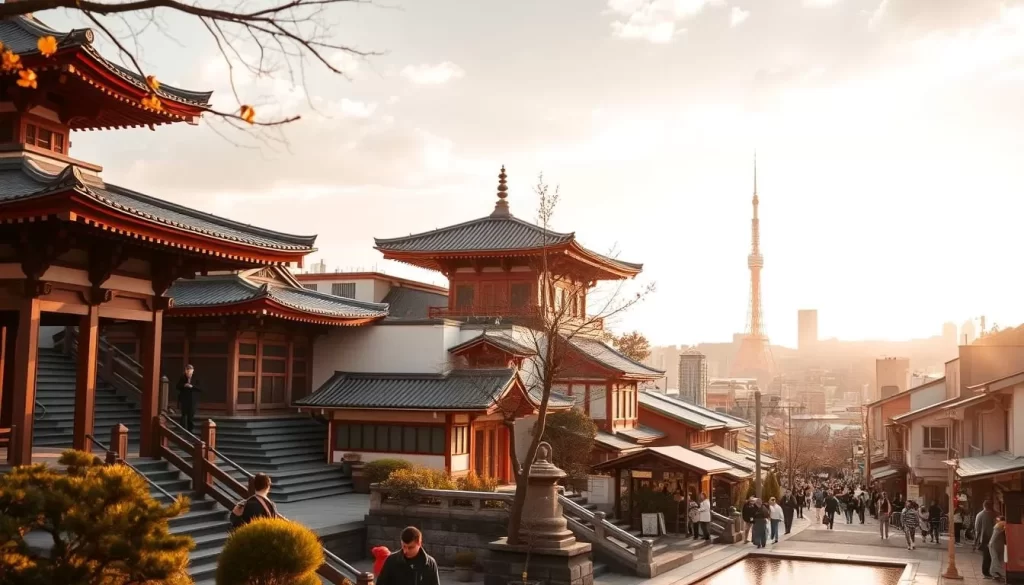
Family-Friendly Day Trip
Ōta-ku is a great destination for families. Heiwa no Mori Park is an excellent spot for a family day out, featuring a Field Athletic Course with over 40 obstacles. Kids can enjoy climbing nets, scaling walls, and sliding on zip lines while learning about Ōta’s history through the obstacles’ names and themes.
After working up an appetite, enjoy a meal at one of Ōta-ku’s family-friendly restaurants, serving a variety of local cuisine.
Cultural and Historical Tour
For those interested in a deeper cultural and historical experience, Ōta-ku offers a wealth of options. Begin at Ikegami Honmonji Temple, exploring its history and admiring its architectural treasures. Next, visit Anamori Inari Shrine to experience Shinto culture.
Continue your cultural immersion with a workshop at the Ota City Tourist Information Center, where you can try calligraphy, ikebana, or a traditional tea ceremony. Finally, relax at one of Ōta-ku’s historic bathhouses, enjoying the black water baths, a unique local tradition.
Conclusion: Why Ōta-ku Should Be on Your Tokyo Itinerary
Ōta-ku, home to Haneda Airport, is more than just a gateway to Tokyo; it’s a fascinating ward that showcases the city’s authentic charm. As you explore this unique district, you’ll discover a perfect blend of convenience and authenticity, allowing you to experience genuine Tokyo life without the overwhelming crowds of more famous tourist districts.
The diverse attractions in Ōta-ku cater to all interests, from cultural and historical sites to natural spaces, shopping districts, and culinary things to do that rival any in Tokyo. By including Ōta-ku in your Tokyo itinerary, you’ll uncover aspects of Japanese culture that remain hidden from most international visitors who stick to the standard tourist circuit.
One of the significant advantages of visiting Ōta-ku is its proximity to Haneda Airport, making it logistically practical whether as your first introduction to Tokyo or as a final stop before departing Japan. The local emphasis on hospitality and community in Ōta-ku creates memorable interactions with residents that often become travelers’ most cherished memories of their time in Japan.
From ancient temples to modern shopping complexes, traditional bathhouses to innovative dining concepts, Ōta-ku encapsulates the harmonious blend of old and new that makes Tokyo so fascinating. Your experience in Ōta-ku will provide a more nuanced understanding of Tokyo beyond the stereotypes, revealing the everyday beauty of life in one of the world’s most dynamic cities.
In conclusion, Ōta Ward is a must-visit places to explore in Tokyo, offering a rich tapestry of attractions and things to see and do. With its unique blend of tradition and modernity, Ōta-ku is sure to leave a lasting impression on your travels, making it an ideal addition to your Tokyo itinerary.
The above is subject to change.
Check back often to TRAVEL.COM for the latest travel tips and deals.
